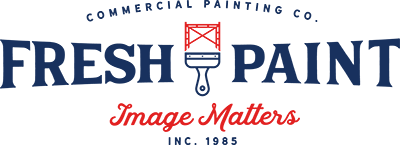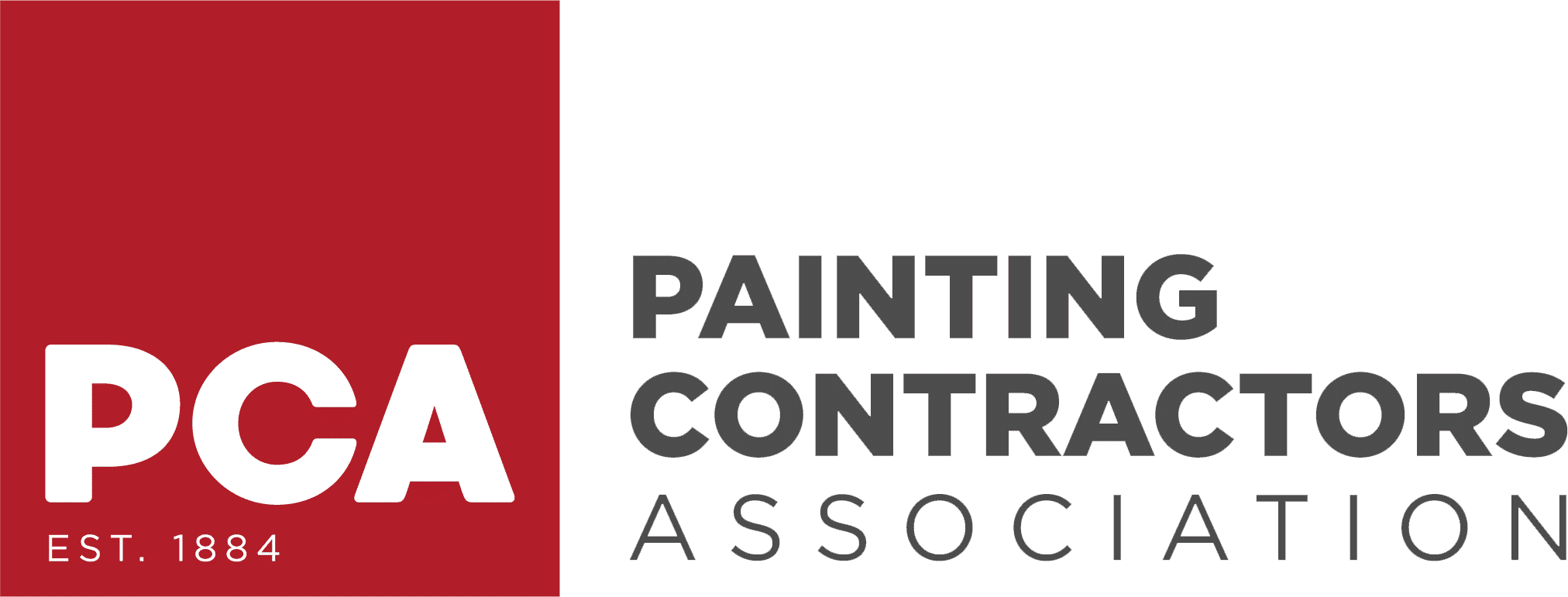
In the high-stakes world of commercial painting, quality isn’t just about the final coat. Compliance with Commercial and Industrial Painting Regulations and best practices is key to safeguarding your budget, protecting workers, and securing your reputation. Here’s why:
- Quality Counts: Cutting corners and hiring a painting contractor based on the lowest price often leads to shoddy work and quick wear and tear. Reputable crews follow compliance regulations to ensure a job is done right from the start, saving you time and money in the long run.
- Safety First: Commercial settings can be risky. It’s essential that any commercial painting crew you hire follows safety rules and uses proper gear.
- Reputation Matters: Non-compliance can lead to delays, environmental issues, and even lawsuits. Professional commercial painting contractors follow compliance regulations and demonstrate professional and dependable best practices.
- Bonus points: Best practices boost efficiency and optimize results.
Compliance isn’t just about legal obligations; it’s about unlocking the full potential of your project. Let’s dive into the specific regulations and best practices for commercial and industrial painting projects that ensure a seamless process and offer a final finish that meets and exceeds expectations.
Overview of Regulations
In commercial and industrial painting, the top priority is to keep everyone safe. To meet these goals, it’s crucial to grasp key rules for industrial painting compliance and adhere to commercial painting regulations.
Strict adherence to safety guidelines like OSHA’s Personal Protective Equipment (PPE) standards is a must. This includes ensuring that painters have the right gear to protect against harmful substances. Following Clean Air Act regulations is also necessary to limit certain compounds in paints, which help to minimize air pollution and stay aligned with industrial painting compliance. While not directly related to industrial and commercial painting compliance, the Lead-Based Paint Hazard Reduction Act helps control exposure to lead paint in older homes, which are often converted to commercial spaces.
Additional commercial painting regulations cover aspects like fire safety and accessibility. Following building codes ensures the use of specific paints and application methods for fire resistance in commercial spaces, aligning with commercial painting regulations. ADA regulations might require specific finishes and color contrasts for signage to enhance accessibility for those with disabilities. Prioritizing these rules goes beyond just obeying the law; it forms the basis for safe, healthy, and environmentally responsible projects. This commitment to industrial painting compliance and commercial painting regulations is not just responsible; it is a cornerstone of our commitment to L.I.F.T., our team, and our clients at Fresh Paint, Inc.
Best Practices for Planning and Execution
Beautiful buildings do not just happen. The successful enhancement of a commercial building’s interior or exterior demands thorough planning and the execution of proven practices. Whether it be a bustling retail space or a vast industrial facility, adhering to industry best practices for painting projects guarantees a visually pleasing appearance and durable results.
Prepping is key. Effective preparation is essential for any painting project. It is crucial to address any surface imperfections such as cracks, leaks, grease, or bumps to ensure a seamless finish. Additionally, careful consideration should be given to the selection of the paint, taking into account factors such as the material being painted, the desired finish (e.g., matte or glossy), and environmental considerations such as sunlight exposure.
Doing the job well. When it comes to commercial and industrial painting, contracting a skilled team of professionals makes a difference. Experienced painting professionals use methods that ensure the best outcome for appearance and longevity. Approaches such as utilizing spray techniques for expansive warehouse spaces, applying specialized coatings for floors and waterproofing, and selecting appropriate paint varieties for metal surfaces hold considerable importance.
Safety first, always. In industrial or high-traffic areas, extra precautions must be taken for worker safety and those around them. Adequate ventilation to eliminate odors and the use of appropriate protective equipment and restraints are imperative. Regular safety inspections and effective communication are crucial for maintaining smooth operations and preventing accidents.
Safety Measures
Commercial and industrial painting comes with a responsibility to prioritize the well-being of workers. To navigate this responsibility, implementing strict painting safety guidelines is crucial.
Industrial painting precautions focus on protecting workers from the inherent risks:
- Respiratory protection: Wearing respirators suitable for the specific paints and chemicals used is essential to avoid inhaling harmful fumes and dust.
- Fall prevention and ladder safety: Working on ladders and scaffolding requires proper harness use and secure footing to prevent falls.
- Skin and eye protection: Gloves and safety glasses are vital to shield skin and eyes from irritants and splashes of paint chemicals.
- Fire safety: Implementing proper fire safety measures, including having fire extinguishers readily available, is crucial in environments where flammable materials are present.
- Hazardous materials: Understanding the dangers of the paints and chemicals used and handling them with proper care and disposal is essential for worker safety.
Commercial painting also necessitates similar precautions, with an additional focus on the following:
- Lead paint awareness: When working in older buildings, identifying and safely handling lead paint is necessary to prevent lead exposure.
- Confined space safety: Working in enclosed spaces requires proper ventilation and monitoring of oxygen levels to ensure worker safety.
- Public safety: When painting in busy areas, using proper signage and barriers to create safe work zones is crucial to protect the public.
By prioritizing these painting safety guidelines and taking necessary industrial painting precautions, we can ensure that every project is not only visually stunning but also executed with the utmost regard for worker well-being.
Case Study
Sky Ridge Business Center: Sky Ridge Business Center + Nature Preserve is a 17-acre property that boasts a unique 7-acre nature preserve. The nature preserve allows tenants to connect with the outdoors with walking trails that explore the marshlands, wildlife, and art sculptures.
With many moving parts in this project, Fresh Paint worked closely with the Willdan staff, property managers, and trade partners to create a seamless project. Our project management team was in full force, coordinating the teamwork needed to move large desking systems, timing access equipment, remove carpets, and install new cars.
Some of the work done for this project:
- Paint Conference Room 17′ Walls, Ceiling & Grid
- Paint 1st Floor Common Areas
- Paint 1st Floor Offices
- Paint Restrooms
- Paint Doors
- Duct Work Cleaning
- Paint Paint Guard Railing & Metal Base
- Paint Facia & Soffit
- Paint 2nd Floor Common Areas
- Paint 2nd Floor Offices
- Paint Reception & Front Desk Area
- Clear Coat Vestibule Floor
Painting commercial and industrial spaces isn’t just about aesthetics; it’s about responsibility. Regulations and best practices are the guide to ensuring safety, sustainability, and project success.
Think of regulations as the safety net, protecting workers and the people and environment around the job. When applied professional painting contractors:
- Protect workers: Proper safety protocols minimize accidents and keep people healthy.
- Boost reputation: Commitment to compliance fosters trust and attracts eco-conscious clients.
- Ensure success: Quality finishes and reduced rework save time and money.
At Fresh Paint Inc., Your Image Matters
We are ready to help L.I.F.T your image for an impeccable appearance.
About Us:
Fresh Paint Inc. is a trusted provider of commercial painting services in the twin cities of Minnesota dedicated to helping businesses achieve exceptional results. From evaluating the condition of your building to preparing surfaces and selecting the right paint, our team of professionals will manage the entire preparation and paint process.
Contact us today to learn more about our commercial painting services.



